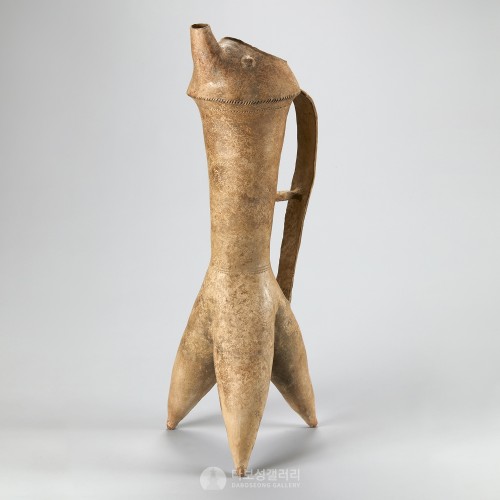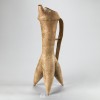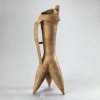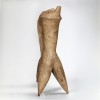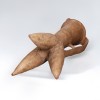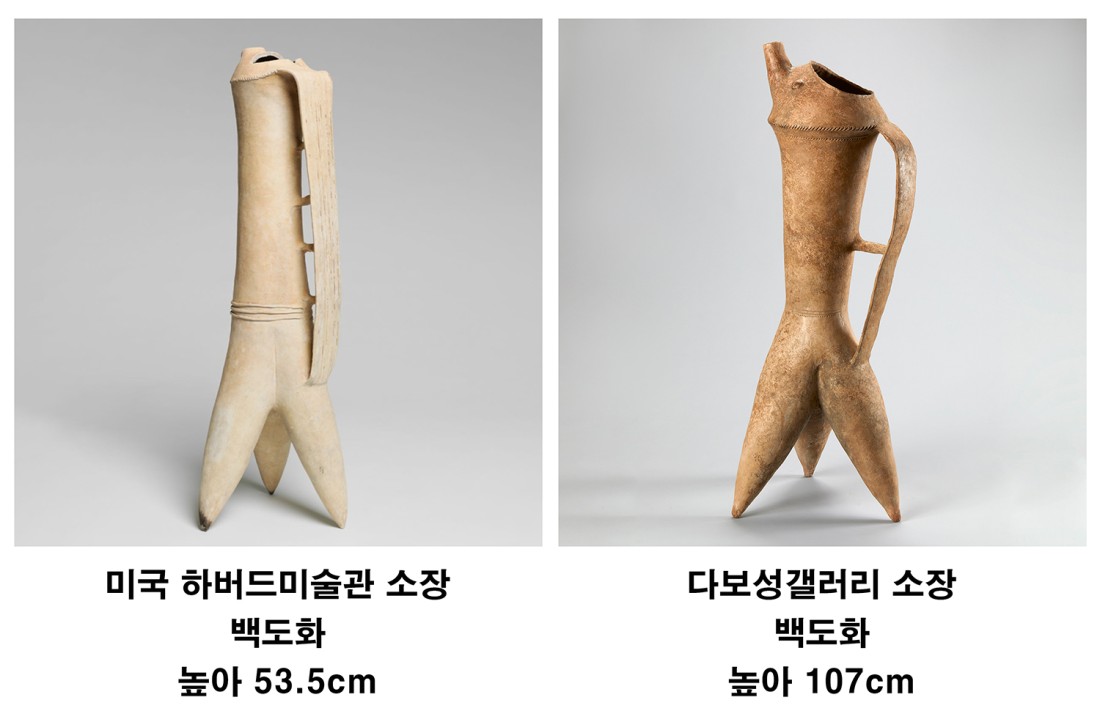본문
이 백도화(白陶盉)는 술을 데우는 데 사용하던 주전자 모양의 세 발 솥인 규(鬶) 형식에 작은 원형의 입구와 길쭉한 원통형 몸통을 가지고 있으며, 세 개의 길고 얇은 원뿔형의 다리가 붙어 있다. 목과 다리에는 가느다란 고리형 손잡이가 붙어 있고, 목의 윗부분과 몸통의 윗부분에 점선이 음각되어 있다. 이러한 삼족 형태의 토기는 신석기시대인 하(夏) 유적에서 많이 발견되었다. 이 유물은 미국 하버드 미술관에 소장되어 있는 백도화와 형태가 비슷하고 크기는 더 크다.
중국에서 흙으로 그릇을 만드는 토기 문화는 신석기시대에 시작되어 도기 문화로 발전했다. 신석기시대의 중국 도기는 황하(黄河) 유역과 장강(長江) 유역·동남해안·북방 유역 등으로 광범위하게 분포한다. 황하와 장강 중상류 지역은 채도로 유명하고, 하류 지역은 정교한 백도기(白陶器)와 흑도기(黑陶器)로 유명하며, 동남해안 지역은 경도기(硬陶器)로 대표되고, 북방 지역은 특색 있는 조형도기로 유명하다. 신석기 도기는 제작 방법에 따라 수제(手製)·모제(模製)·완륜(慢輪)·쾌륜(快輪)으로 나뉘며, 문양으로는 압인(壓印)·박인(拍印)·각화(刻畵)·채색(彩繪)·누공(鏤孔)으로 나뉜다. 제작 가마로는 횡혈요·수혈요가 있다. 이처럼 다양한 신석기시대의 다양한 도기문화는 오늘날 도자기의 모태가 되었다.
该白陶盉是用于加热酒的执壶形状的三足鬶形状,圆形口,细长的圆柱形器身,下承三个瘦袋形足,颈与后袋附一环形鋬手,颈上部和器身的上部分阴刻虚线。夏朝的遗址中发现很多这样三足形状的土器,该文物与在美国哈佛美术馆收藏的白陶盉形状相似,但体积更大。
在我国,土制陶器的陶器文化始于新石器时代,并发展为陶器文化。 新石器时代的中国陶器广泛分布在黄河流域、长江流域、东南沿海、北方流域等。 黄河、长江中上游地区以彩陶著称,下游地区以精美的白陶、黑陶著称,东南沿海地区以轻陶为代表,北方地区以特色造型陶器著称。新石器陶器根据制作方法分为手工、毛制、完轮、快轮,图案分为压印、剥印、刻画、彩绘、镂空。制作窑炉有横穴窑和输血窑。如此多样的新石器时代的各种陶器文化成为了当今陶瓷的雏形。
A white pottery tripod ewer for heating drinks. It has a small round spout on an elongated body terminating in three tapering bulbous feet. A large strap handle is attached to the legs and neck. The neck is embellished with a notched collar below the domed mouth. Tripod earthenwares are usually found in neolithic sites of the Han dynasty. The present relic resembles the one housed in Harvard Art Museum and is larger than that.
Chinse pottery began in the Neolithic period and developed into earthenware. Neolithic Chinese earthenware is widely distributed along the Yellow River, the Yangtze River, the southeast coast, and the northern basin. The upper-middle areas of the Yellow River and Yangtze River are known for painted pottery, the downstream area is known for elaborate white pottery and black pottery, the southeast coastal area is represented by hard pottery, and the northern region is famous for its distinctive shaped pottery. It is also divided into the hand-made, mold-made, slow wheel, and the fast wheel by production method. The patterns are divided into stamped, printed, engraved, painted, and perforated. Kiln types include horizontal kilns and vertical kilns. As such, various pottery cultures of the Neolithic Age became the beginning of pottery today.
